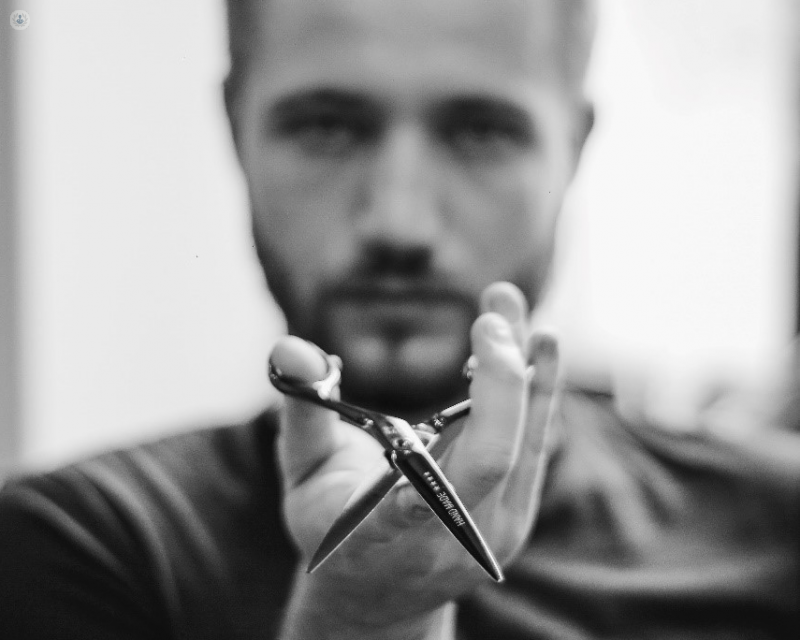Phimosis: when should you consider circumcision?
Written in association with:A tight foreskin, known medically as phimosis, is a condition where the foreskin is too tight to be pulled back over the head of the penis, causing pain or discomfort when urinating and having sex. Although in babies a tight foreskin is very normal, when it comes to teenagers and adults it can be a problem.
Mr Jaspal Virdi is a leading urological surgeon based in Essex and Hertfordshire. We asked him to explain why this condition forms in young boys and adult men and when circumcision should be considered as a treatment option. Here’s what he had to say.

At what age should the foreskin pull back?
At birth, the foreskin is attached to the glans (head of the penis) by a thin layer of inner-prepuce. Usually, by age three this thin layer disintegrates, allowing the foreskin to fully retract, however, this process can sometimes be delayed up to the age of around five. The dead tissue that falls off subsequently builds up and appears like pearls which frequently exude to complete the separation process.
In some cases, these pearls dry, causing irritation and redness of the glans or foreskin. This condition is called balanitis which is treated with local antibiotics. However, if it persists, then oral antibiotics are offered.
This fusion between the foreskin and glans rarely requires surgical intervention and usually separates spontaneously.
What happens if the foreskin does not fully retract?
The foreskin has two anatomical elastic areas: one at the tip and the other over the glans.
When the elastic ring at the tip does not stretch, the foreskin does not retract over the glans properly. This condition is called phimosis.
If phimosis is observed in a child aged ten or above, it is highly unlikely that it will resolve by itself. The condition can cause ballooning where the urine is unable to pass through the restricted opening of the foreskin and causes it to swell. Additionally, this condition prevents the foreskin from being retracted when the penis is erect, however, sometimes, the ring can partially relax allowing the foreskin to be retracted when the penis is flaccid.
If the foreskin can be retracted when the penis is erect, the tightened ring can sometimes prevent the skin from moving forward again, which results in a painful condition known as paraphimosis. This requires emergency management to prevent the glans from swelling.
Can you treat phimosis at home?
If there is partial tightness of the foreskin it can often be treated by applying topical hydrocortisone. Additionally, regular retraction of the foreskin at home can relax and stretch the skin in around 60 per cent of cases. This method should be tried before deciding to undergo circumcision.
When is circumcision recommended for phimosis?
Firstly, if applying topical hydrocortisone and practising gentle stretching techniques do not work, then circumcision, or a similar procedure called preputioplasty, might need to be considered.
Secondly, in some cases, white scarring at the tip of the foreskin can appear which is a condition known as balanitis xerotica obliterans. If this condition does not resolve with medical treatment then circumcision may be considered.
Finally, if recurrent balanitis (redness of glans) occurs that results in infection, inflammation, and scarring, then circumcision is usually the best treatment.
How is circumcision done?
Circumcision is usually done under general anaesthetic particularly for young boys, however, for adults, it can be done under local anaesthetic.
Circumcision can be partial or complete depending on both the patient’s choice and the condition that is affecting them.
- Complete circumcision: the surgeon will remove all of the foreskin that covers the glans. The cut is made on penile skin behind the crown of the glans where the skin is much less elastic.
- Partial circumcision: the surgeon doesn't remove all the foreskin, but instead, they leave some of it to cover the crown of the glans. The cut is typically made in the elastic area of the foreskin. A partial circumcision has an advantage over complete circumcision in that it may preserve the sensitivity of the glans, although this is often debatable.
- Preputioplasty: If the ring of the prepuce is only tight during erections - causing restriction or pain during sex – then the patient can opt to undergo this procedure if they wish to preserve their foreskin. A preputioplasty is a minimally invasive surgical procedure and the primary aesthetic impact is a slightly shortened foreskin. The surgeon makes a longitudinal incision along the tightened ring of the prepuce to release it and then closes it using absorbable sutures transversely. The result has a more noticeable visual effect and can often leave a painful scar. This type of incision is known as a limited dorsal slit with a transverse closure.
Does circumcision reduce the sensitivity of the glans?
This has been a topic of debate between experts for many years. Many argue that the sensitivity of the glans, in particular during sex, is lost following circumcision, whilst others disagree. Let's look at a couple of studies carried out on both circumcised and uncircumcised men.
Circumcised: A 2016 study found that for uncut penises, the foreskin was the part of the penis most sensitive to touch. Although, the study also highlighted that this doesn’t mean that a man's experience of pleasure during sex changes if you’re cut or uncut.
Uncircumcised: A 2011 study reveals that men with cut penises self-reported more difficulties reaching orgasm. However, a 2012 response to the study points out that the 2011 study showed no direct link between circumcision and sexual satisfaction. They also highlighted various factors that might have misconstrued the results of the study.
If you believe you are suffering from any of the conditions mentioned in this article, visit Mr Jaspal Virdi’s Top Doctors profile and book a consultation to discuss your symptoms.


